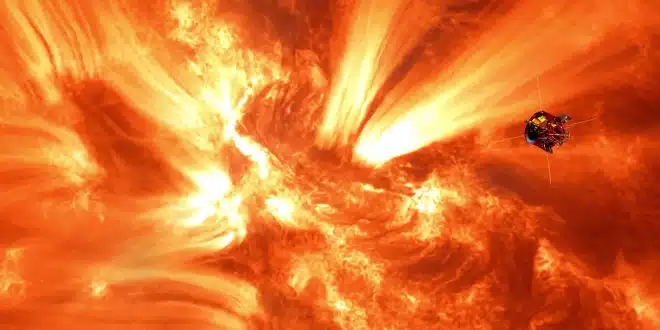NASA’s Parker Solar Probe has achieved a significant milestone in solar exploration by completing its closest approach to the Sun to date. On December 24, 2024, the spacecraft passed within approximately 3.8 million miles (6.1 million kilometers) of the solar surface, traveling at speeds nearing 430,000 miles per hour (692,000 kilometers per hour). This event marks the fastest velocity attained by a human-made object and brings the probe closer to the Sun than any previous mission.
Mission Progress and Scientific Objectives
Launched in August 2018, the Parker Solar Probe has been on a trajectory designed to bring it progressively closer to the Sun. Utilizing seven gravity assists from Venus, the spacecraft has adjusted its orbit to achieve these close approaches. The December 2024 flyby represents the 22nd perihelion of the mission, with subsequent close passes occurring on March 22 and June 19, 2025. These maneuvers are part of the probe’s strategy to study the Sun’s outer atmosphere, known as the corona, and to collect data on solar wind and magnetic fields.
The probe’s primary scientific goals include understanding why the Sun’s corona is significantly hotter than its surface and investigating the mechanisms that accelerate the solar wind. By flying through the corona, the Parker Solar Probe aims to provide unprecedented insights into these phenomena, which have implications for space weather and its effects on Earth.
Technical Achievements and Future Plans
The spacecraft’s ability to withstand the extreme conditions near the Sun is facilitated by its Thermal Protection System, an 8-foot (2.4-meter) carbon-composite heat shield capable of enduring temperatures up to 2,600 degrees Fahrenheit (1,427 degrees Celsius). This shield ensures that the probe’s instruments remain operational during close solar encounters.
Following the December 2024 flyby, the mission operations team at the Johns Hopkins Applied Physics Laboratory received confirmation of the spacecraft’s health and status. Data collected during this and subsequent flybys are expected to enhance our understanding of solar dynamics and contribute to the development of predictive models for solar activity.


